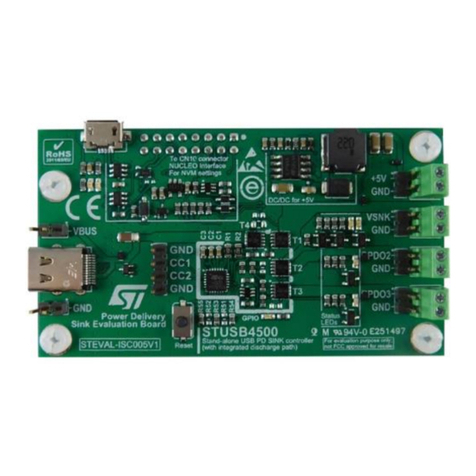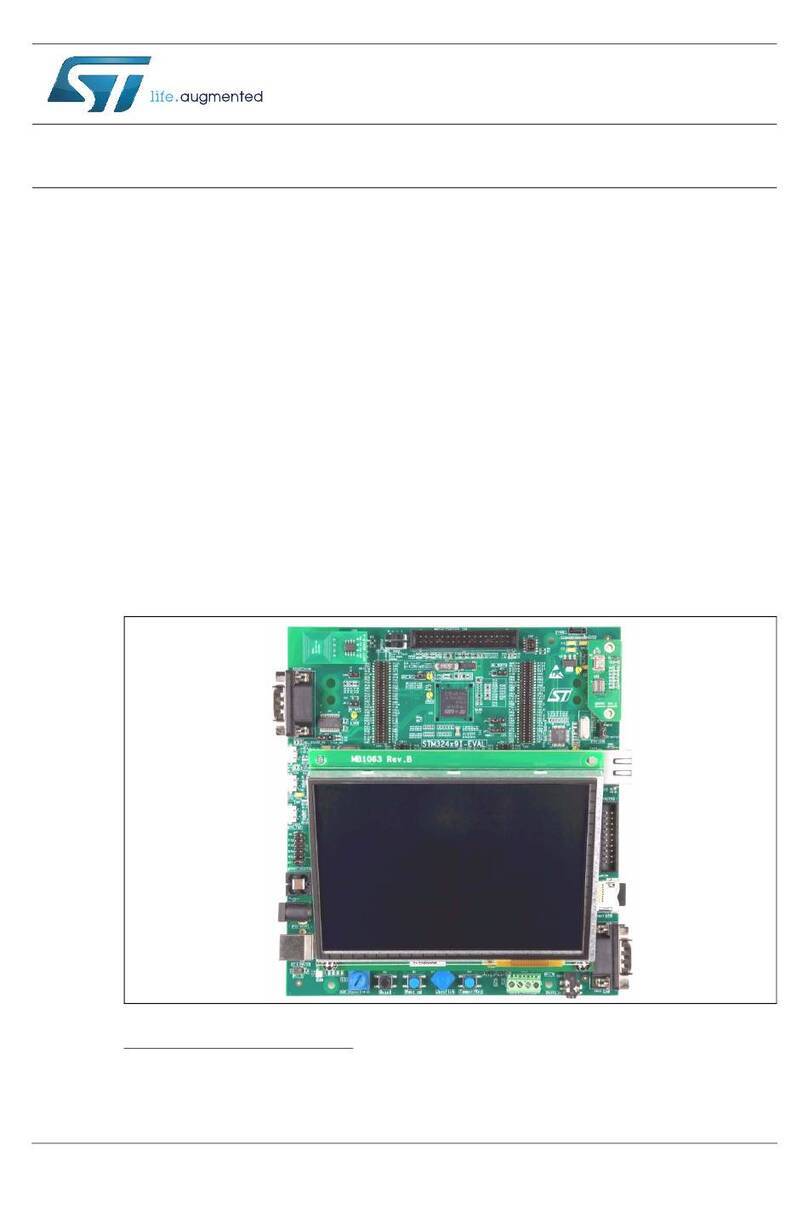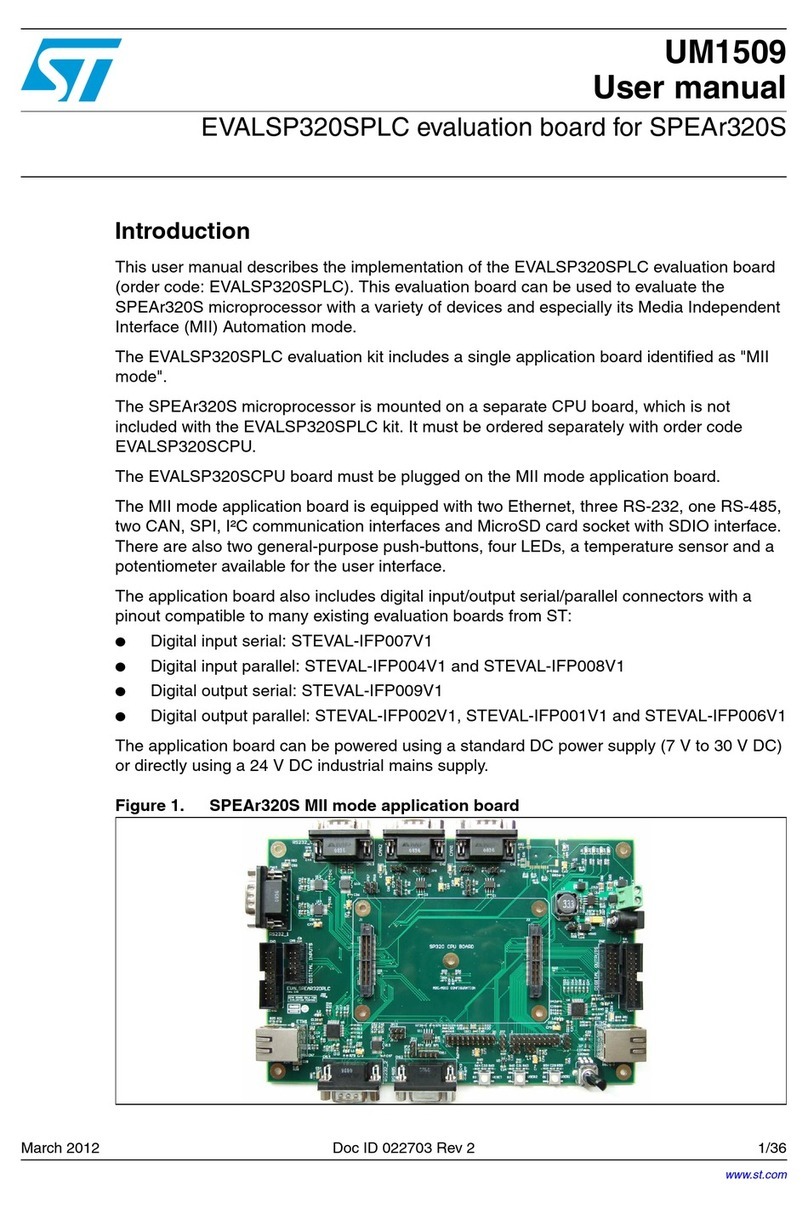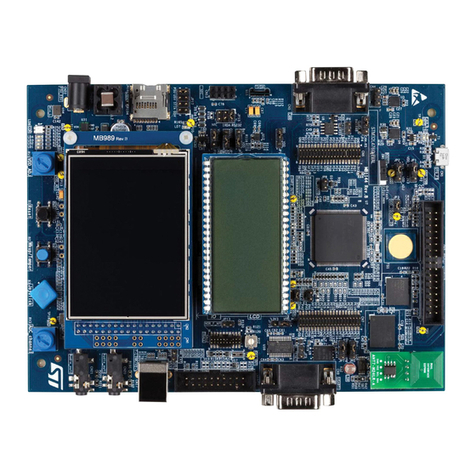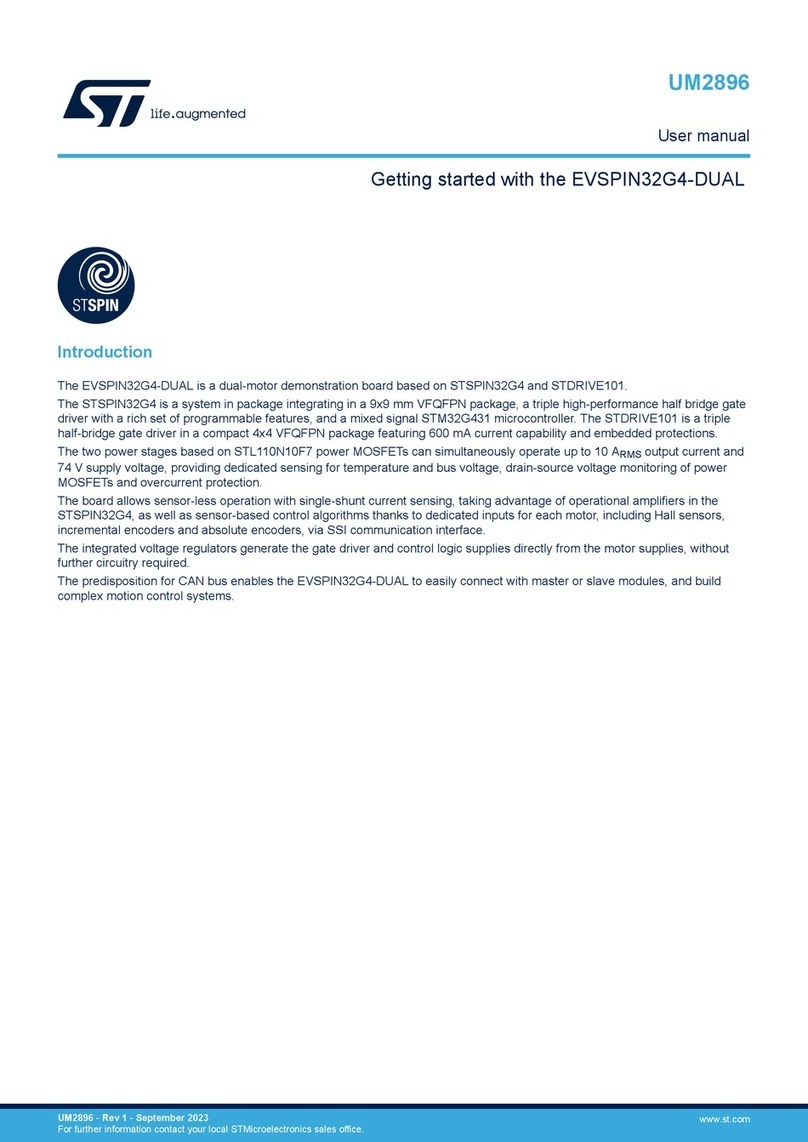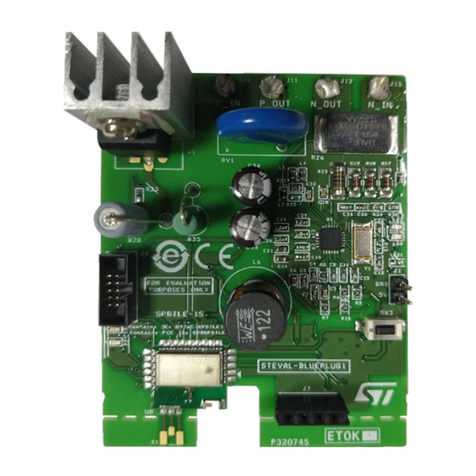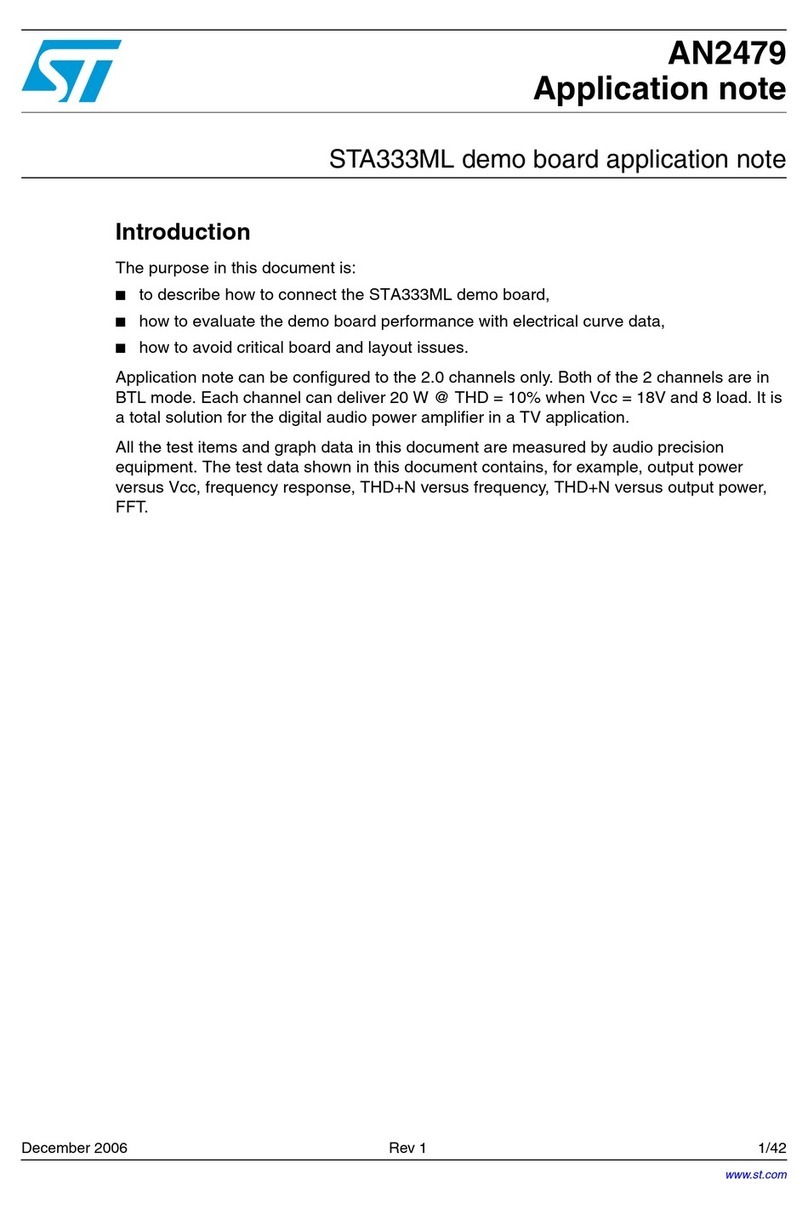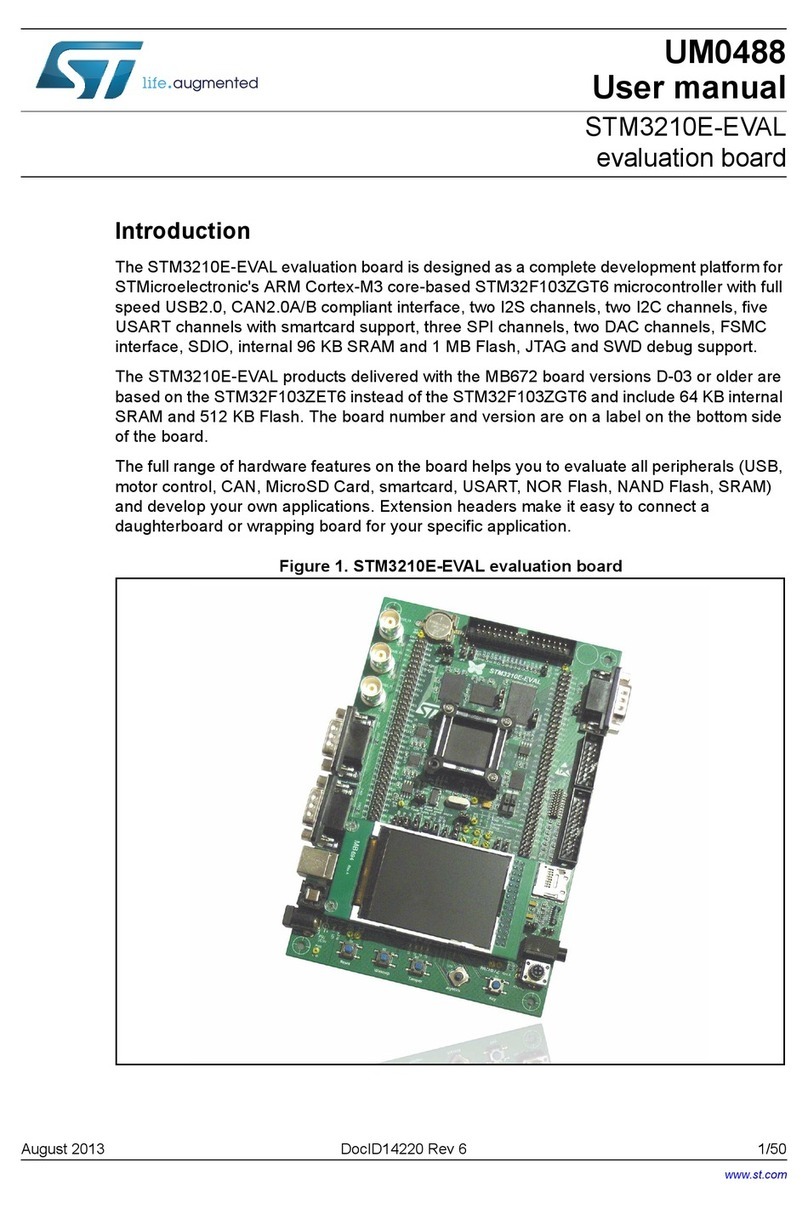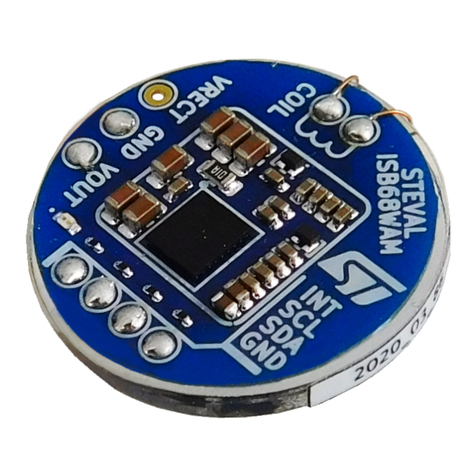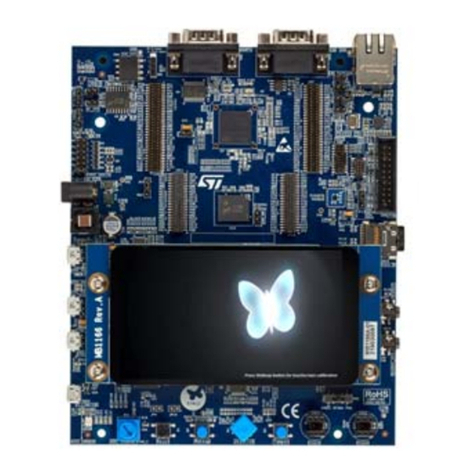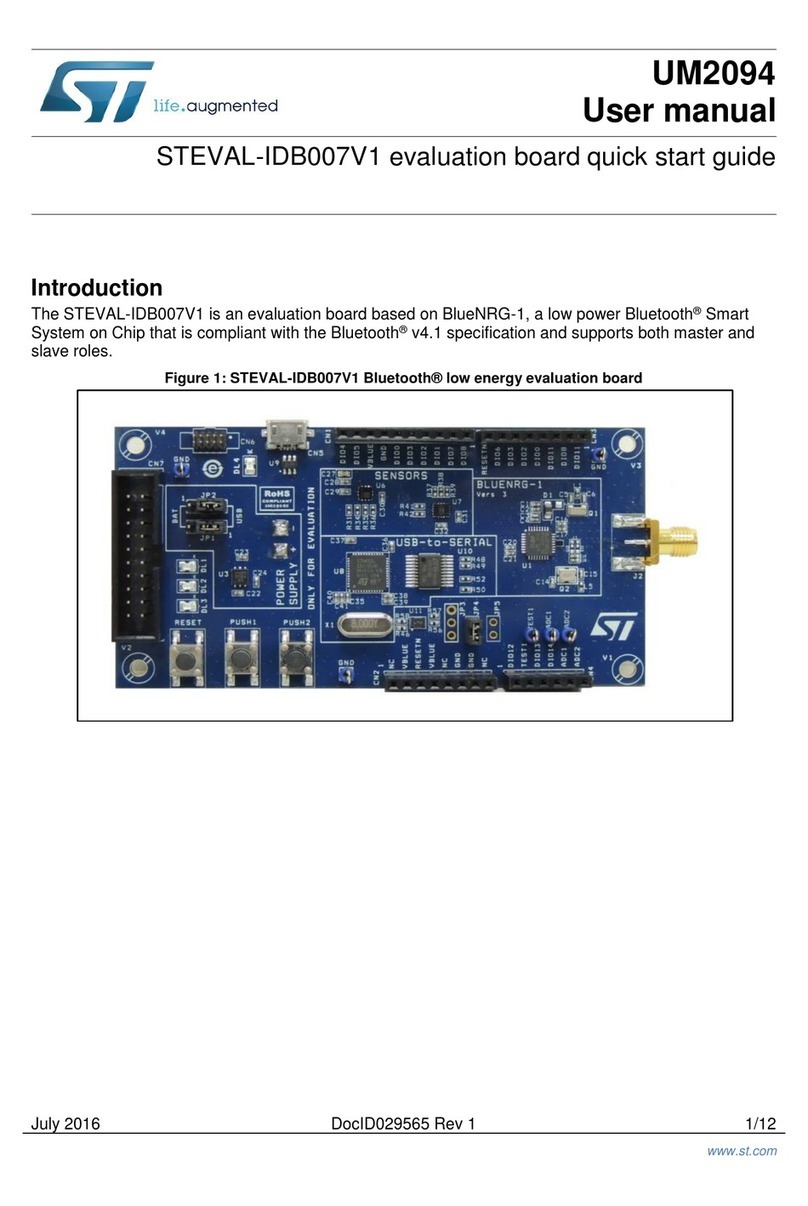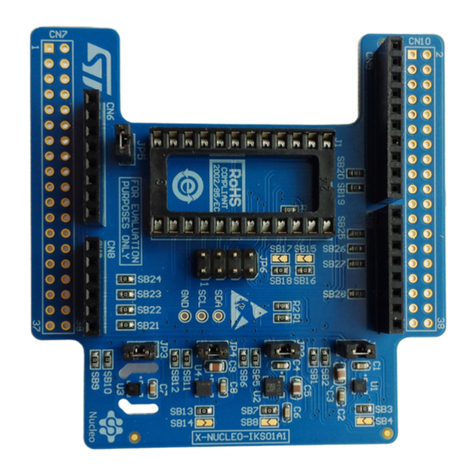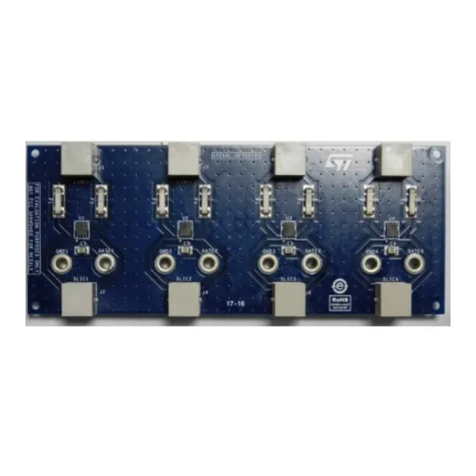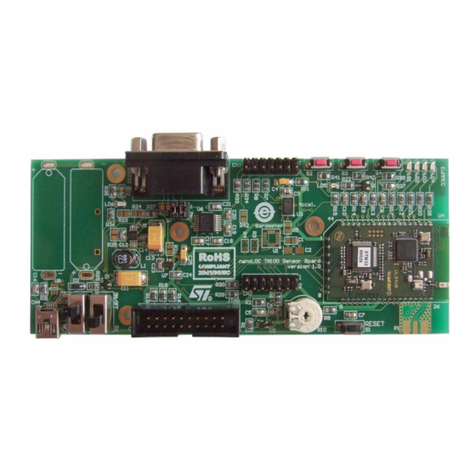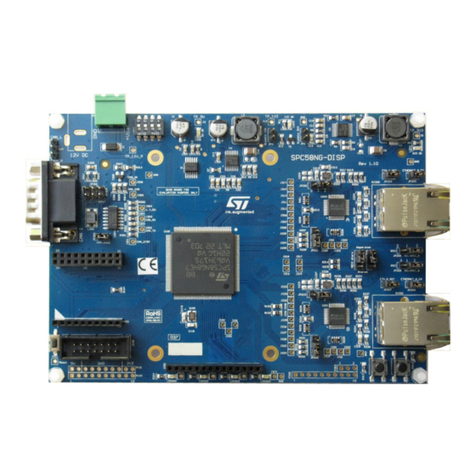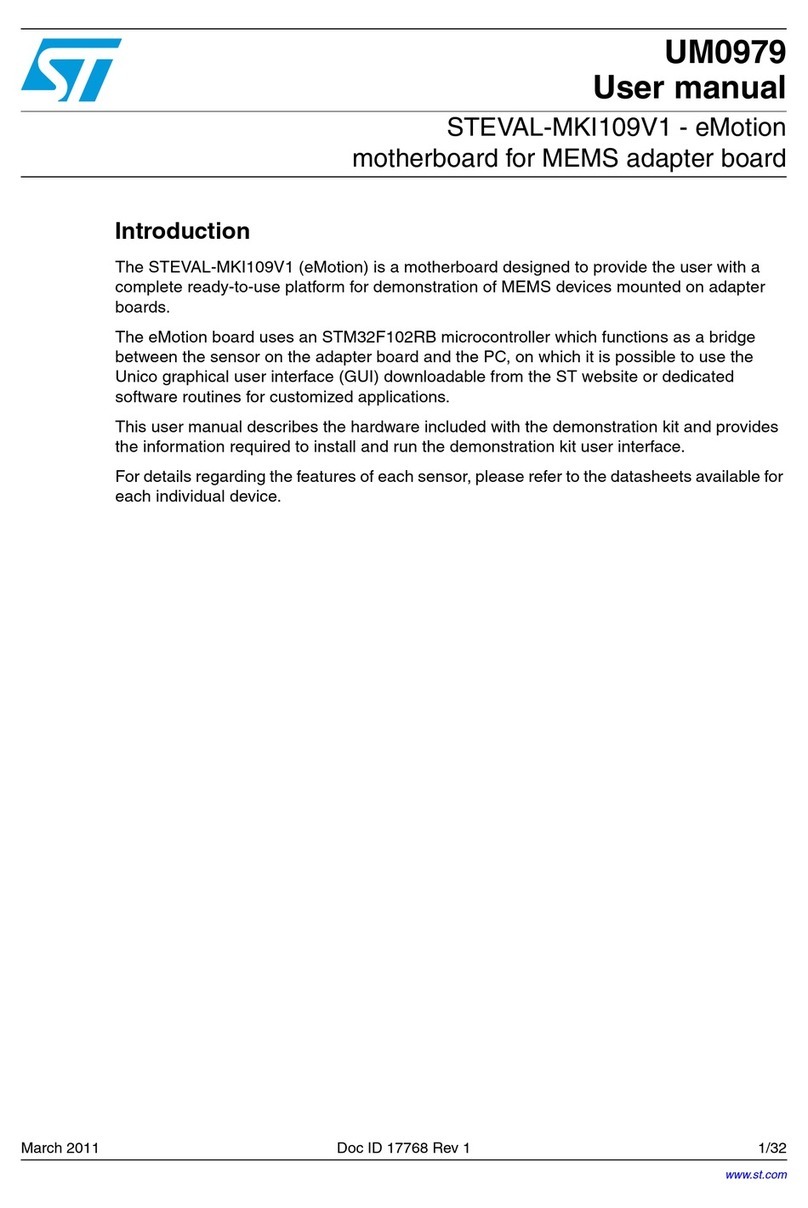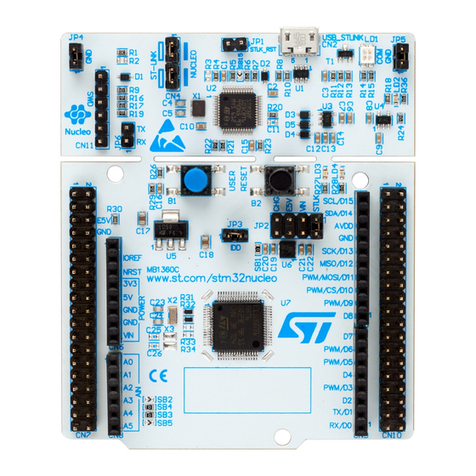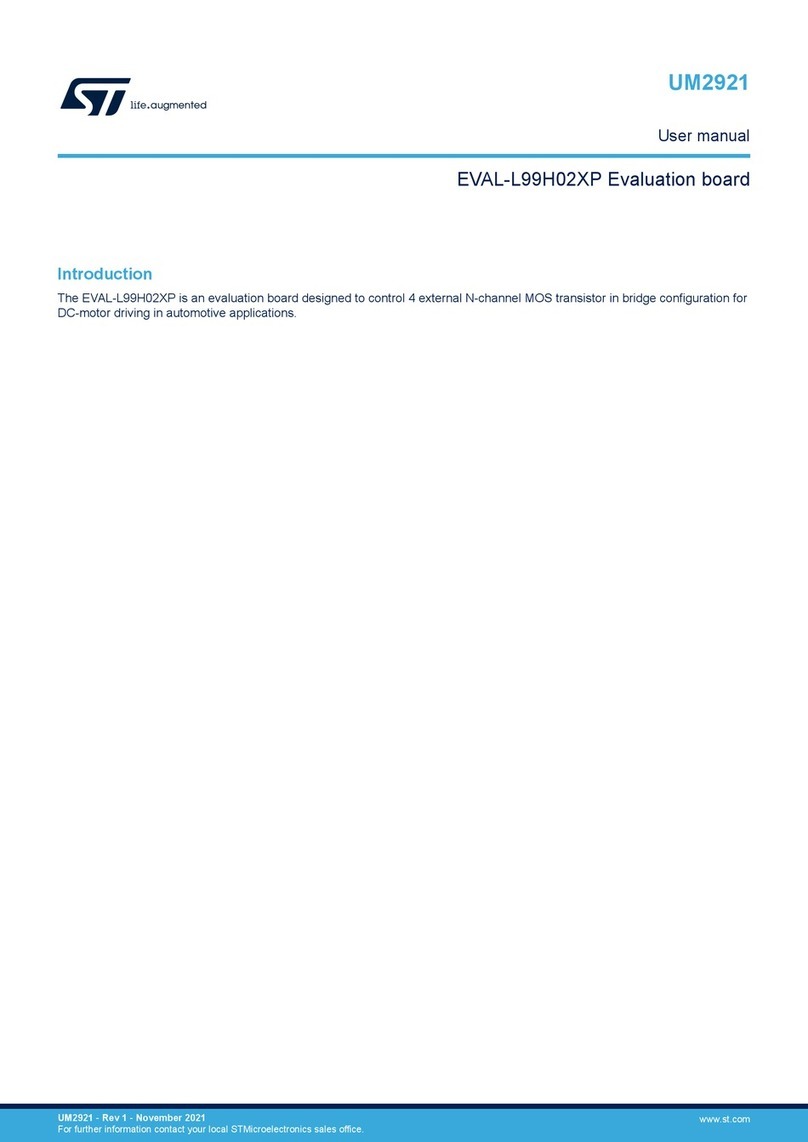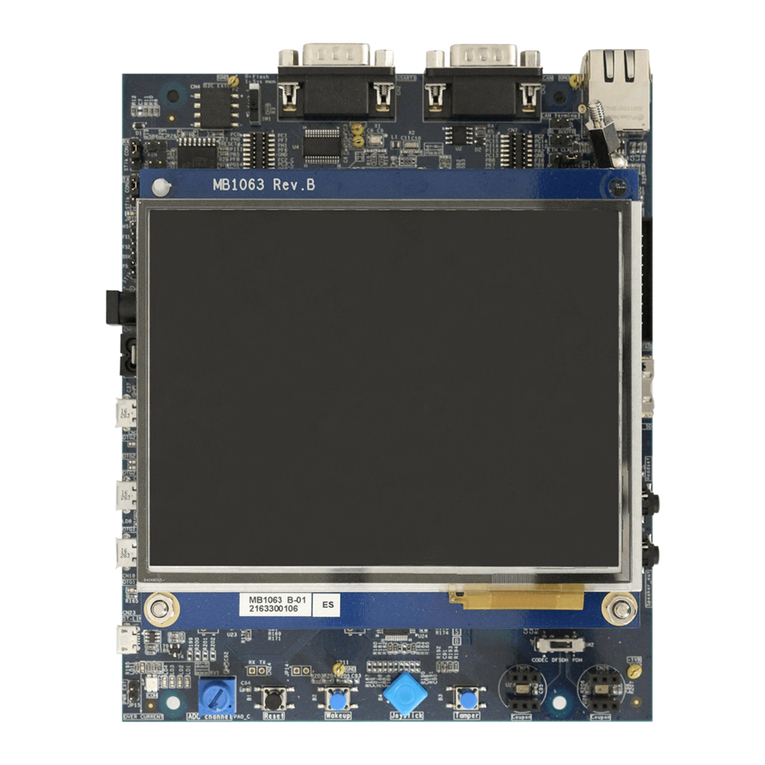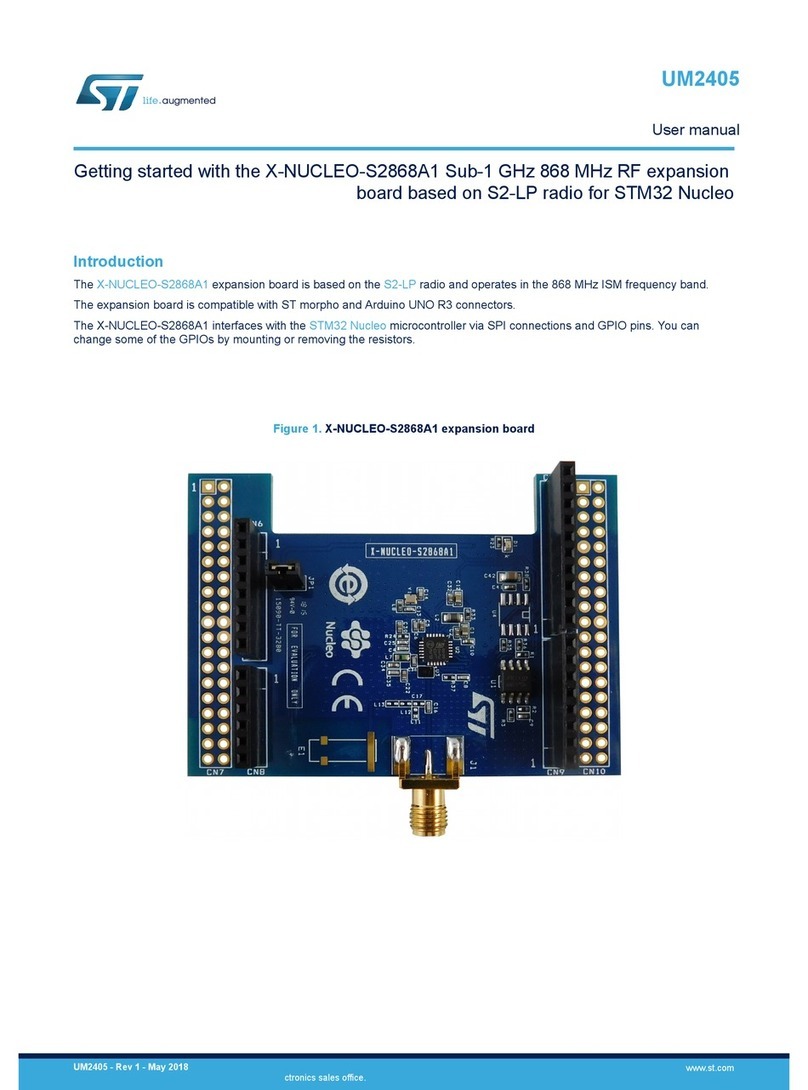
1Getting started
1.1 Safety precautions
Danger:
There is danger of serious personal injury, property damage or death due to electrical shock and
burn hazards if the kit or components are improperly used or installed incorrectly.
Warning:
• The kit is not electrically isolated from the high-voltage supply AC-DC input.
• The evaluation board is directly linked to the mains voltage. No insulation is ensured
between the accessible parts and the high voltage. All measurement equipment must be
isolated from the mains before powering the board.
• When using an oscilloscope with the evaluation board, it must be isolated from the AC line.
This prevents shock from occurring as a result of touching any single point in the circuit, but
does NOT prevent shock when touching two or more points in the circuit.
Caution: During assembly, testing, and operation, the evaluation board poses several inherent hazards, including bare
wires, moving or rotating parts and hot surfaces.
All operations involving transportation, installation, use and maintenance must be performed by skilled technical
personnel who is familiar with the installation, use and maintenance of power electronic systems.
Work area safety
• The work area must be clean and tidy
• Do not work alone when boards are powered
• Protect the area against any unauthorized access by putting suitable barriers and signs
• A system architecture that supplies power to the evaluation board must be equipped with additional control
and protective devices in accordance with the applicable safety requirements (i.e., compliance with technical
equipment and accident prevention rules)
Electrical safety
• Remove power supply from the evaluation board and electrical loads before performing any electrical
measurement
• Arrange measurement setup, wiring and configuration paying attention to high voltage sections
• Once the setup is complete, power the board
Danger:
Do not touch the evaluation board when it is powered or immediately after it has been
disconnected from the voltage supply as several parts and power terminals containing potentially
energized capacitors need time to discharge, and heat-sinks and transformers may still be very
hot.
The kit is not electrically isolated from the AC-DC input.
Personal safety
• Always wear suitable personal protective equipment, such as insulating gloves and safety glasses
• Take adequate precautions and install the board preventing accidental touch
• Use protective shields, such as insulating box with interlocks
UM2772
Getting started
UM2772 - Rev 1 page 2/28

